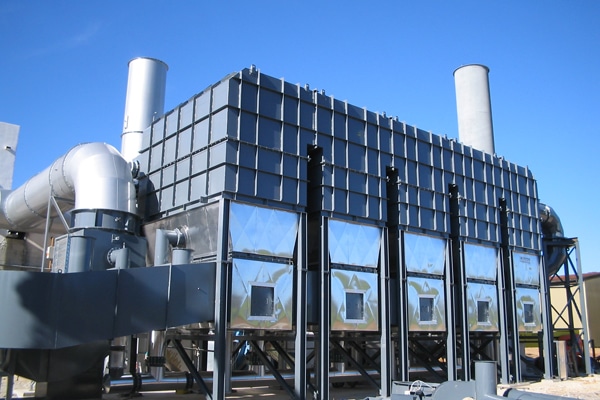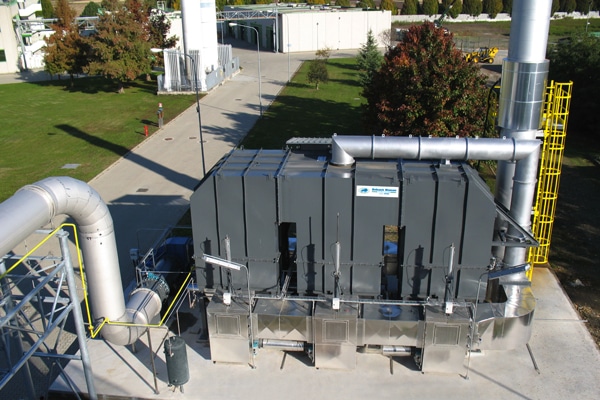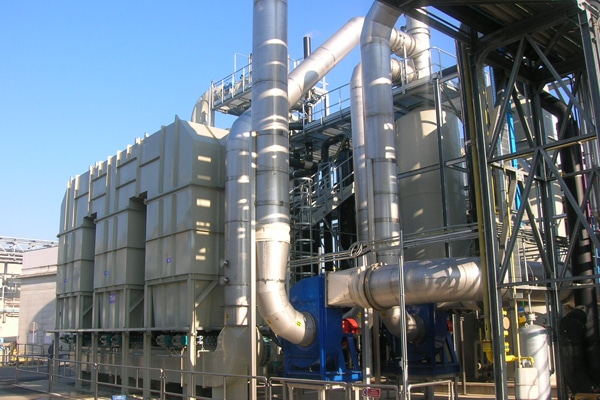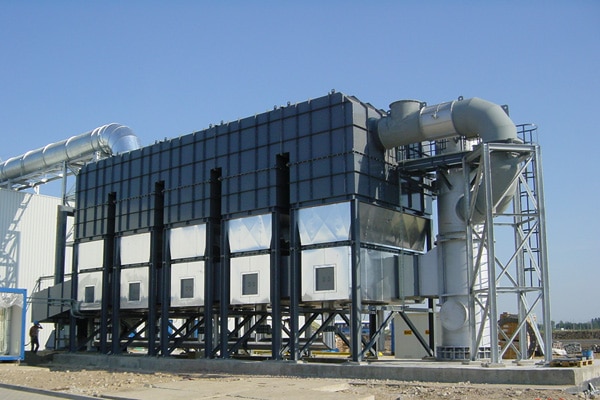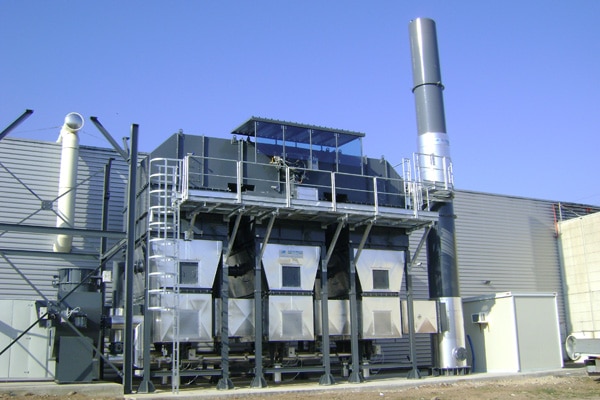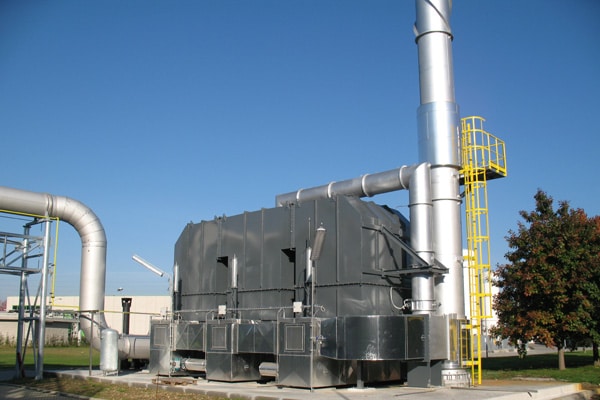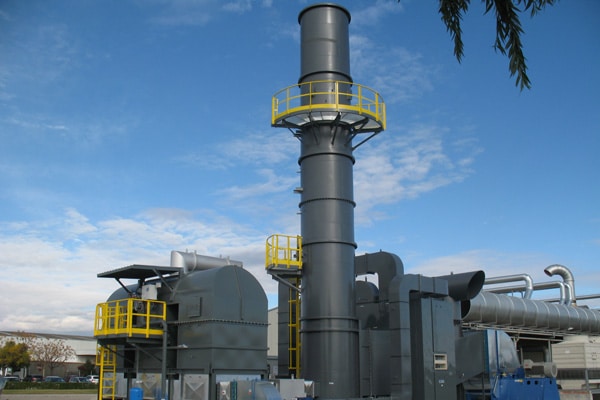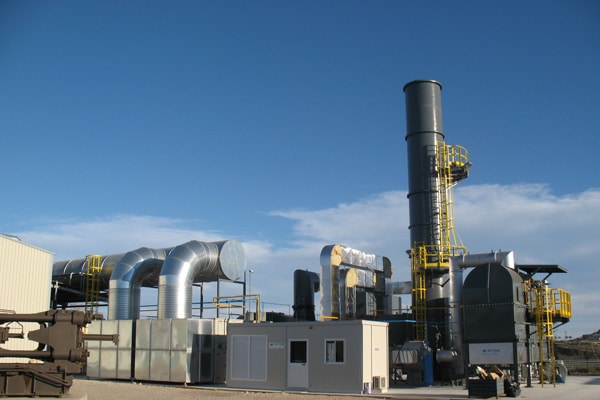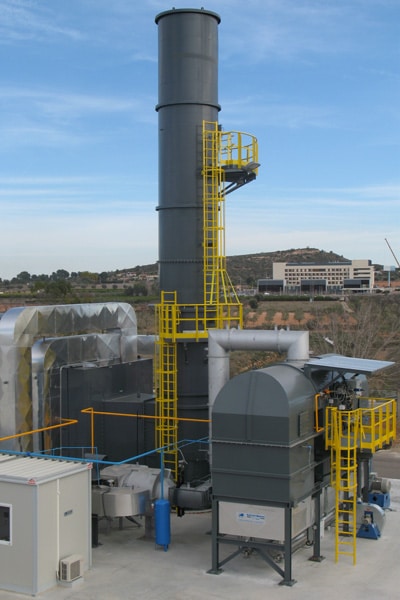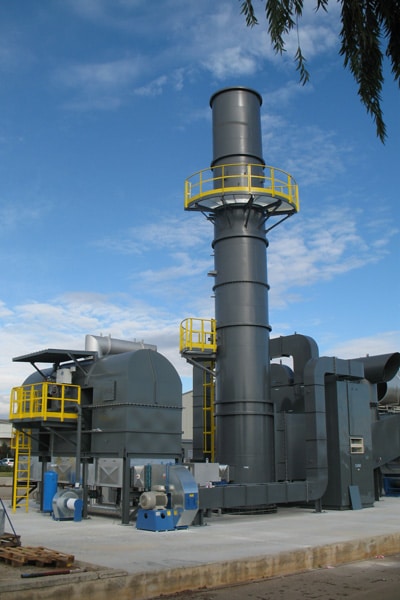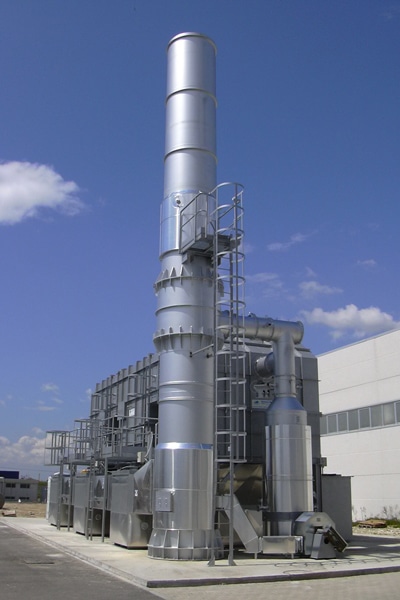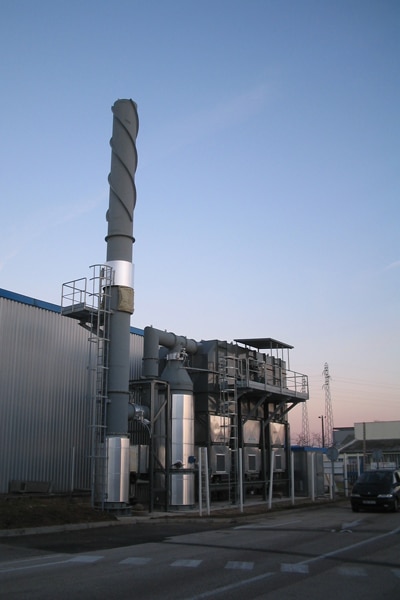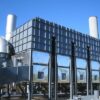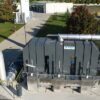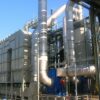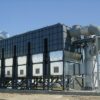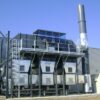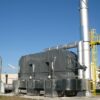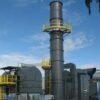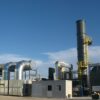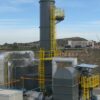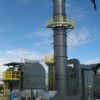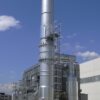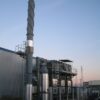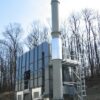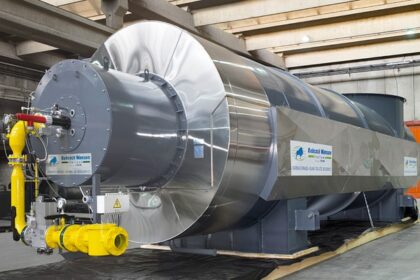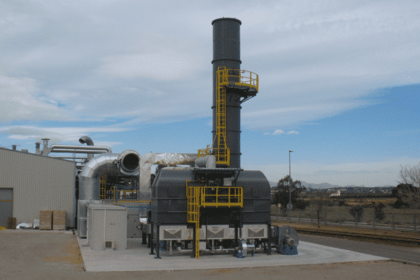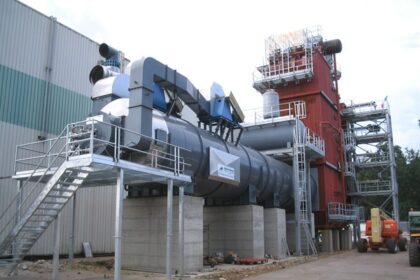Regenerative Oxidisers
Regenerative Oxidisers are used where there is no requirement for heat recovery, or the amount of heat that can be recovered is too small to justify a Thermal Recovery Oxidiser. They are also well suited to processes that discharge high volumes of exhaust with relatively low VOC content.
Operating Principle
The VOC laden air from the process is drawn into the Oxidiser by means of a variable speed controlled effluent transport fan. The effluent is heated in the incoming tower, passed through the combustion chamber and cooled in the exit tower, each of which is filled with a specialist ceramic material.
To achieve the best thermal oxidation of the VOC, the following conditions must be met:
- Temperature between 750 and 950°C
- Dwell time of the effluent in the combustion chamber between 0.6 and 1 second
- Good turbulence for efficient mixing of effluent and oxygen
A Regenerative Thermal Oxidiser typically includes:
- Effluent transfer fan with automatic control system
- Heat storage towers filled with ceramic material (2, 3 or 5 towers depending on operating criteria)
- A system of automatic valves for effluent distribution through the towers (designed and manufactured by Babcock Wanson)
- Combustion chamber with one or more modulating automatic gas/fuel burners.
- Control panel PLC and operator interface panel (HMI)
Advantages of Regenerative Oxidisers
- As effective as Recuperative Thermal Oxidiser, with lower NOx emissions
- Suited to high flow, low VOC content exhaust streams
- Continuous control of the emissions
- Simple management of operation
- Reduced maintenance
- Reduced gas/fuel consumption: the Regenerative Oxidiser can achieve auto-thermal conditions with very low concentrations of VOC
- Self-contained plant which does not produce waste or heat requiring subsequent recovery
- Range from 1,000 to 150,000 Nm³/h







